Explore Argentina's mobile landscape and its growing trends.
January 10, 2025
Written by Turian Biel

Table of Contents
- Mobile Phone Penetration and Usage in Argentina
- Overview of Mobile Phone Penetration Rates
- Smartphone Usage Trends in Argentina
- Mobile Internet Accessibility and Costs
- Mobile Network Coverage in Argentina
- Impact of Mobile Phones on E-commerce
- Mobile Phone Usage Among Different Age Groups
- Mobile Data Usage and Trends
- Future Projections for Mobile Phone Market
- Mobile Phone Regulations and Policies
- Mobile Phone Market Dynamics in Argentina
- Growth of Mobile Applications in Argentina
- Mobile Phone Brands and Market Share
- Mobile Phone Replacement Trends
- Impact of COVID-19 on Mobile Phone Usage
- Mobile Data Consumption Patterns
- Mobile Phone Security and Privacy Concerns
- Mobile Phone Regulations and Compliance
- Future of Mobile Connectivity in Argentina
- Conclusion
Mobile Phone Penetration and Usage in Argentina
Overview of Mobile Phone Penetration Rates
As of 2024, Argentina boasts a mobile phone penetration rate of 144%, indicating that there are more mobile connections than people in the country. In 2022, the number of mobile cellular telephone subscribers reached approximately 60.24 million. Furthermore, mobile internet users are estimated to total 38 million, representing around 85% of the total population. A report from 2023 indicated that 89.229% of the population uses the internet. Additionally, 61.01 million cellular mobile connections were recorded at the start of 2023.
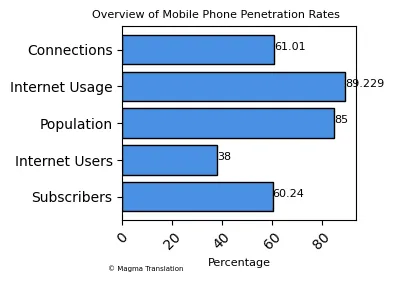
Smartphone Usage Trends in Argentina
In Argentina, smartphone ownership is remarkably high, with 94% of Argentines owning a mobile phone and 88% having smartphones. The most popular mobile operating system is Android, capturing 77.6% of mobile web traffic. In 2022, smartphone penetration reached 46.9%, with approximately 20.98 million smartphone users. The average daily smartphone usage rose from 4.95 hours in 2022 to 5.33 hours in 2023.

Mobile Internet Accessibility and Costs
Mobile internet accessibility in Argentina is significant, with 90% unique subscriber penetration rate reported. The average monthly cost for a mobile phone contract is around $5.20, which includes 140 telephony minutes and 70 text messages. Data transfer averages 2 GBytes. In 2023, mobile data prices ranged from ARS 300 to ARS 1000, depending on the package and provider.
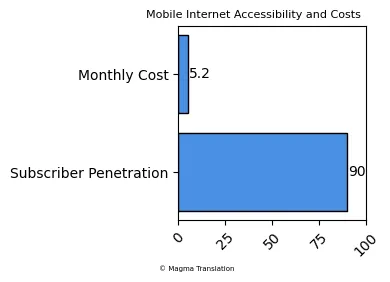
Mobile Network Coverage in Argentina
Mobile network coverage in Argentina was recorded at 94.10% of the population in 2016. This figure remained unchanged from 2015 and is slightly above the world average of 94.01%. Major mobile operators include Claro, Movistar, and Personal, which provide extensive coverage across urban and rural areas.
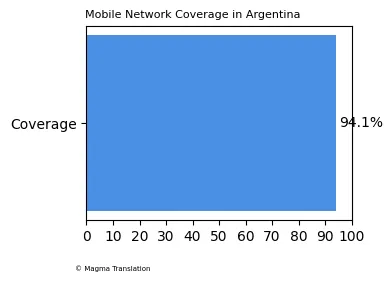
Impact of Mobile Phones on E-commerce
Mobile phones significantly influence e-commerce in Argentina, with 69% of e-commerce volume coming from mobile devices. The Argentine Chamber of Electronic Commerce (CACE) reports that 95 percent of connected Argentine adults have made online purchases at least once. This trend highlights the growing reliance on mobile technology for shopping and transactions.

Mobile Phone Usage Among Different Age Groups
According to a Pew survey, 84% of Argentine adults under 35 own a smartphone, while ownership among those aged 35-49 is at 77%. For those over 50, the percentage drops to 42%. This data indicates a generational divide in smartphone adoption and usage patterns.
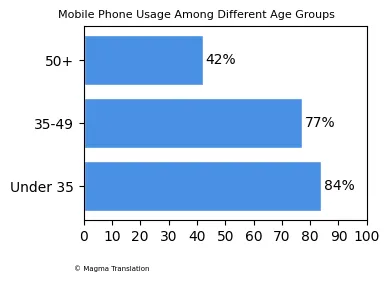
Mobile Data Usage and Trends
Daily smartphone usage in Argentina has increased, with users spending an average of 75.6 minutes daily watching TV and 31.3 minutes on other screens. The rise in mobile data consumption is evident, with 59% annual growth in smartphone sales reported in Q3 2017.
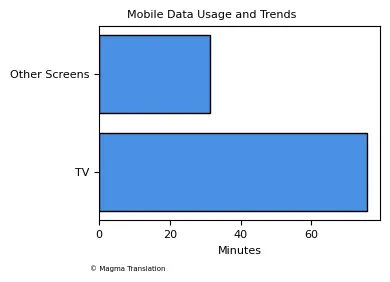
Future Projections for Mobile Phone Market
Looking ahead, the mobile phone market in Argentina is projected to grow, with an estimated unit shipment increase of 10% in 2024. This growth is driven by the rising demand for smartphones, which are expected to account for over 70% of total mobile phone shipments.
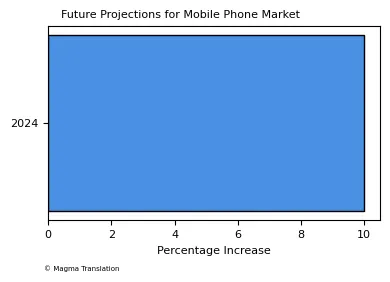
Mobile Phone Regulations and Policies
In Argentina, regulations surrounding mobile phones have evolved, with policies encouraging local manufacturing. The introduction of mobile phones in prisons has also transformed inmate lives, allowing for better communication during the Covid-19 pandemic. This shift reflects broader societal changes regarding mobile technology.
Mobile Phone Market Dynamics in Argentina
Growth of Mobile Applications in Argentina
The mobile application market in Argentina has seen significant growth, with 92.5% of mobile traffic coming from Android devices. Popular apps include WhatsApp, Facebook, and Instagram, which dominate user engagement. The rise of mobile commerce has also led to an increase in app downloads, with 78% of online purchases made using a credit card. This trend highlights the importance of mobile applications in daily life and commerce.
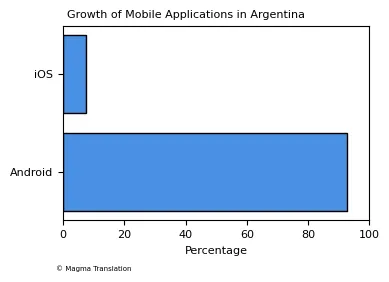
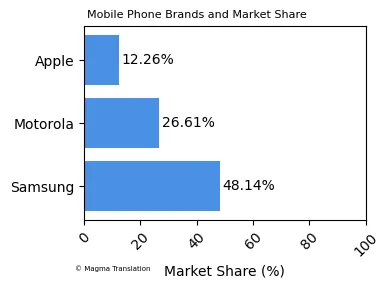
Mobile Phone Replacement Trends
In Argentina, the trend of replacing mobile phones is on the rise, with many users opting for newer models every 12 to 18 months. This behavior is driven by the rapid advancement of technology and the desire for better features. Additionally, the influx of 2 million mobile devices entering the country illegally each year also impacts the market dynamics.
Impact of COVID-19 on Mobile Phone Usage
The COVID-19 pandemic has significantly impacted mobile phone usage in Argentina, with an increase in demand for mobile connectivity. Following the pandemic, inmates were allowed to use cellphones, reflecting a broader acceptance of mobile technology. This shift has led to a greater reliance on mobile devices for communication and information access.
Mobile Data Consumption Patterns
Mobile data consumption in Argentina has surged, with users increasingly relying on their devices for streaming and browsing. In 2023, mobile internet users spent an average of 31.3 minutes on other screens daily. The demand for high-speed internet has led to the introduction of 5G technology, which is expected to enhance user experience significantly.
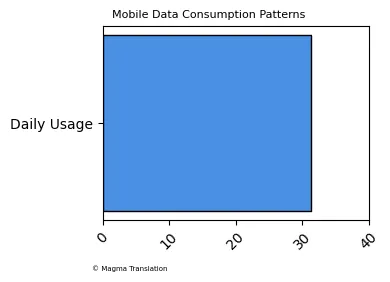
Mobile Phone Security and Privacy Concerns
As mobile phone usage increases, so do concerns regarding security and privacy. In Argentina, 7.9% of all web-based page views are consumed beyond personal computers, raising questions about data protection. Users are becoming more aware of the need for secure applications and practices to safeguard their information.
Mobile Phone Regulations and Compliance
Argentina has implemented various regulations to ensure compliance in the mobile sector. The introduction of the Prestacion Basica Universal y Obligatoria (PBU) allows low-income individuals to access mobile services affordably. This initiative reflects the government's commitment to enhancing mobile connectivity for all citizens.
Future of Mobile Connectivity in Argentina
The future of mobile connectivity in Argentina looks promising, with projections indicating a rise in mobile internet users to 39.8 million by 2024. The ongoing advancements in technology and infrastructure are expected to support this growth, making mobile connectivity more accessible to the population.
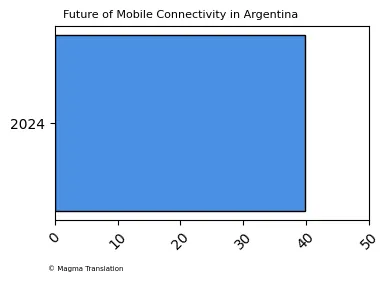
Conclusion
In conclusion, Argentina's mobile phone landscape is characterized by high penetration rates, significant smartphone usage, and a growing reliance on mobile applications for daily activities and commerce. With advancements in technology and increasing internet accessibility, the future of mobile connectivity in Argentina appears bright, promising further growth and innovation in the sector.
